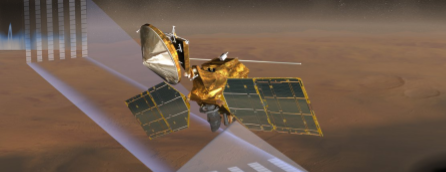
Cloudspotting On Mars
Characterize exotic clouds high in the Martian atmosphere.
- Ongoing
More Information
Clouds are a familiar feature in the atmospheres of planets. Because they can both warm and cool the atmosphere, they are important for understanding the weather and climate of planets. On Mars, icy clouds can form high in the atmosphere (above 50 km, about 30 miles up), the “mesosphere,” called “mesospheric clouds”. These clouds are interesting for several reasons. Although Mars is a dry planet, there is water vapor in the atmosphere that can form water-ice clouds. However, because the atmosphere of Mars is made up almost entirely (95%) of carbon-dioxide and it is cold, carbon-dioxide ice (think dry ice!) clouds can also form.
Some important questions about these clouds:
- What causes the atmosphere to get cold enough for carbon-dioxide to freeze out?
- How do clouds change from day to night, or during different seasons, or in some years more than others?
- What are the clouds made of?
Our goal with this project is to first find and map these clouds to create a database that will help answer such questions.
To do this, we’ll be searching through data acquired by the Mars Climate Sounder (MCS) on the Mars Reconnaissance Orbiter (MRO). MCS is an instrument that peers at the horizon of the planet in the infrared and visible to measure temperature, water-ice, and dust content of the atmosphere on Mars. From nearly the first day that MCS sent data back to Earth, strange features were observed at high altitudes. These features have an arch-like or loop shape to them and have since been recognized to be clouds.
Ticket Required: No
Minimum Age: 13
Languages: English
